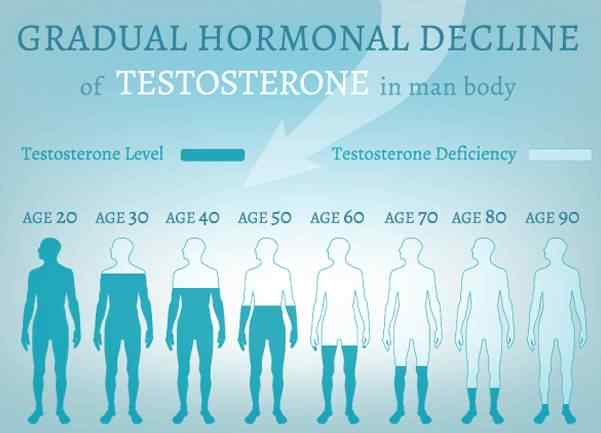
Androgen deficiency in the aging male (ADAM), also known as andropause, affects an estimated 1 in 200 men. As men grow older, levels of free testosterone decrease and estrogen levels increase, leading to a myriad of symptoms, including:
- Reduced libido
- Erectile dysfunction
- Decreased muscle mass
- Weight gain
- Depression
- Reduced cognitive function
- Osteoporosis
- Declining cardiovascular health
Men age 50 or older with symptoms of hypogonadism and a total testosterone level < 300ng/dl respond well when started on hormone replacement. A man may be considered hypogonadal at any age if blood tests reveal a total testosterone is less than 200 ng/dl, or bioavailable testosterone is less than 60 ng/dl.
Advances in understanding the function of hormones and the role of hormone replacement has made it possible to manage many of the negative side-effects associated with age-related hormone decline. Biologically identical testosterone, derived from yams, has the same molecular structure and produces the same effects as the free form of testosterone produced by the testes. The term "testosterone" is often used generically when referring to numerous synthetic derivatives, as well as natural bio-identical testosterone.

Conflicting data in the medical literature about the benefits and risks of testosterone therapy is confusing for medical professionals and patients. It is important to carefully review studies to determine the form of testosterone used. Natural testosterone must not be confused with synthetic derivatives or "anabolic steroids," which, when used by athletes and bodybuilders, have caused disastrous effects.
For example, administration of synthetic non-aromatizable androgens, like stanozolol or methyltestosterone, causes profound decreases in HDL-C ("good cholesterol") and significant increases in LDL-C ("bad cholesterol"). Yet, hormone replacement with aromatizable androgens, such as testosterone, results in lower total and LDL cholesterol levels, while having little to no impact on HDL cholesterol levels.
Goals of Testosterone Replacement Therapy in Adult Hypogonadal Men (age 50 or older)
- Improvement in psychological well-being and mood
- Improvement in erectile dysfunction
- Improvement in libido Increased muscle mass Increased strength and stature
- Preservation of bone mass
- Possible decrease in cardiovascular risk
Testosterone therapy and dosages for men are based on hormone test results. No two individuals are the same and hormonal needs differ from person to person. There are many commercial products available promising to help overcome the negative effects of a testosterone decline (such as loss of libido, depression, and osteoporosis). However, bioidentical testosterone replacement addresses the underlying cause of the problem and not just the side-effects, while offering added long-term health benefits.
To Find Out More About How To Diagnose & Treat Low Testosterone In Men, Check Out Our Blogs:
Testosterone Replacement Therapy in Men: Diagnosing Testosterone Deficiency (Part 1)
Testosterone Hormone Replacement Therapy in Men: Treatment Options



